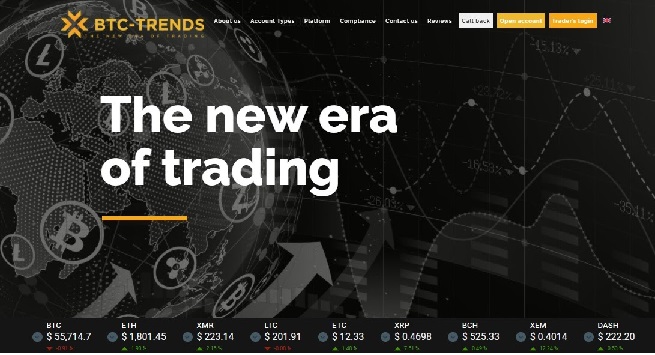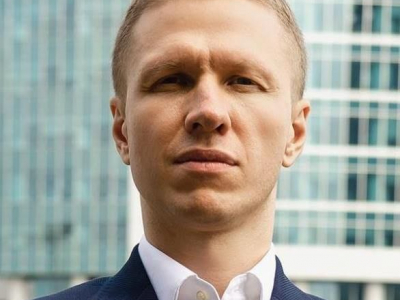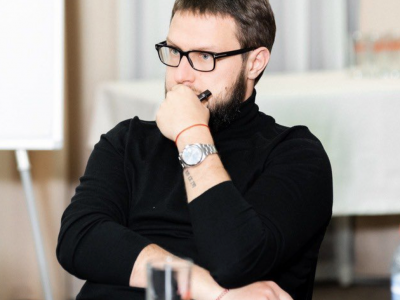Prediction Market has always been a tepid track in the DeFi world.
The leader projects, to be precise, the big fishes in a small pond, would be Augur, focusing on decentralized Oracle solution and Omen based on the Gnosis conditional token framework. The Augur was established by the Forecast Foundation in 2015. The original intention was to provide an underlying protocol for the prediction market, mainly to solve the problem of arbitrations. Omen is a platform for prediction markets launched by DXdao. Although Augur was invested by Vitalik and Omen is backed by Gnosis, the trading volumes on these two platforms is simply not worth mentioning in front of DeFi's troika: stablecoin, lending market, and DEX.
However, since mid-2020, UniSwap has simplified other lending protocols such as Compound based on the interest rate model by adopting a simple-constant-product rule, which has detonated the AMM DEX market and Liquidity Mining also added fuel to DeFi world. Just like UniSwap, there has also been an innovative pioneer in the Prediction Market: a platform Clover42 developed by an anonymous Russian geek team, and their Gamification Simplified Protocol (GSP) mechanism, which simplified and gamified prediction market model. They also invent Prediction Mining Power, and the Jackpot Token Repurchasing and Burning mechanisms, and the Liquidity Mining with Algorithmic Adjusted.
Some people may ask why this platform is called Clover42? According to the explanation on their official website: Four-leaf clover represents a small probability of good luck in Western countries. The number 42 is, in The Hitchhiker's Guide to the Galaxy by Douglas Adams, the "Answer to the Ultimate Question of Life, the Universe, and Everything", calculated by an enormous supercomputer named Deep Thought over a period of 7.5 million years. Pretty Cool, right?
Next, I intend to start my analysis from the pain points of the current prediction market track.
Current Pain Points
Insufficient Liquidity
Augur: As one of the earliest ICO tokens and Ethereum applications, the team’s original aim was underlying Oracle protocol, but due to the clumsy, slow and usually unusable first version, it did not gain the favor of other prediction market development teams. After its Dapp was launched, it was transformed into a "global, no-limit betting platform", but the experience was very poor with serious loading delay. There is now a total of 50 open markets on Augur, and the largest volume is only a prediction about Trump's re-election, with a deposit of less than $100,000:

After 5 years, Augur finally launched V2, integrating 0x Mesh, which is an on-chain relay order book system. Although it partially solves the problems of slow transactions and high gas fees on the main chain, pure P2P trading means there is no global price, only a series of bilateral transactions at different prices. For instance, any user who wants to go long, a counterparty must be found to short, so there is still a problem of liquidity exhaustion.
Omen: In response to Augur’s problem, Omen borrowed the concept of automatic market maker for liquidity mining, establishing a global trading arena based on the Gnosis protocol, so that cross-platform trading is possible as long as tokens from other platforms like Polymarket are based on the same Gnosis protocol. This has solved the liquidity problem to some extent. But the total transaction volume in the third quarter of 2020 is only $1.35 millions. I believes the cause would be their complex token model, which would be explained in the following sections.

Clover42: The Russian geek team has obviously learned the lessons and has taken a different approach to solve the liquidity problem. First of all, the platform simplifies the prediction market model and draws users by a gamified way. On the first market DeFi9 project, by betting on the rank of liquidity change rate of the hot top 9 tokens on UniSwap. People mine market tokens, or to say mining powers, simply by making bets on daily basis. That also ensures the growth of the investment vault, so that there is enough fund for rewording first prize winners, and for token repurchasing and burning in UniSwap periodically, both of which would definitely set off the users’ enthusiasm.
Complex Structure and Long Development Cycle
It took 5 years for Augur to graft IPFS, DAI deposit, Uniswap price oracle, 0x and other technologies from V1 to V2; similarly, developers on Omen have to interface with external oracle arbitration systems such as Realitio or Kleros for prediction process completion. Augur and Omen did not actually simplify the workload of developers, but brought barriers to normal users, resulting in inefficiency overall.
Clover42, on the contrary, simplifies the prediction market model, and integrates every necessary components together: deposit, predictions making, multi-functional vault structure, mining power distributions among different markets, staking, liquidity mining and result determination, and provides simple interfaces. Dapp logic can be very friendly to users to guarantee rapid platform expansion.
Unclear Token Logic
The Reputation (REP) token based on ERC-20 is the quasi-governance token of the Augur platform, which is only "used for reporting and resolving disputes" and mainly used for arbitration. Recently Augur proposed REP V2, but the new contracts do not support REP and are not friendly to old users. Omen is one of many platforms built on the conditional token framework, which can be packaged as ERC-20 tokens based on the ERC-1155 specification. But in Omen’s design, every prediction result in every market would produce a result token, which will greatly increase the complexity of the system.
In Clover42, C42 is the platform token, and each market has only one market token of its own. For instance, the ERC20 token DF9 is the market token of the first prediction market called DeFi9 online on Clover42. In addition to governance functions, DF9 is more of a mining power representation. The "mining" product refers to Clover42 platform token C42, which is publicly traded on DEX/CEX. This design much clarifies the relationship between the platform token and each prediction market token. There is a mathematical model of the platform token production speed based on the total platform revenue, and a clear and fair distribution model based on the contributions of each market. Mining power of markets tokens measured by liquidity mining C42. And all mining, staking processes are automatic, by algorithms written in the smart contracts. So the whole system from the user's point of view is quite simple, fair and reasonable.
Clover42's Trilogy of Innovation
Jackpot C42 Repurchasing and Burning Mechanism
I believe that one of the major innovations of Clover42 is its semi-random C42 repurchasing and burning mechanism:
Firstly, the platform takes reasonable advantage on the nature of the prediction market, that is, predictions have both wins and losses. The built-in C42 repurchase event trigger mechanism based on the random probabilities. The main trigger is when someone wins the jackpot, supplemented by regular events if there is no jackpot winner for multiple consecutive rounds and vault overflowing. As a result, those semi-random trigger events form a collective expectation on price drive of C42 in the UniSwap.
From the marketing perspective, this has greatly stimulated users’ enthusiasm for market participation, because no matter what the prediction result is, it is “all winners” for any individual. The user’s return can be the reward by making the right predictions, or passively holding the value surged C42 when someone else is right.
From the economical perspective, the system makes full use of the randomness of the predicted events by nature, and uses probability to design the distribution mechanism of the prize vault, which not only guarantees generous rewards to arouse market participation, but also ensures C42 repurchasing frequency. Hence C42 hold both decentralized nature and burning mechanisms similar to CEX platform token. The token value would inevitably rise on a longer time scale, and also in a shorter time with additional randomness. The contingency would greatly increase the interests and attention of the platform.
Prediction Mining Power
As mentioned above, Clover42’s token logic design is subtle: it does not introduce the concept of conditional tokens. There is only one token in the single market that is produced in the form of platform token mining power, which is achieved at the platform level. It gives me the feeling of unity and harmony of the design. In a single market, users can mine market tokens automatically and naturally by participating in prediction games, and the mining rate is specified by the algorithm. The market tokens mined will automatically be staked into the liquidity mining pool of C42. The whole process is simple and spontaneous. The system hides complex algorithm implementations. Users have a seamless experience and effortlessly participate in two-tier mining in fun. At the same time, for users who are passionate about a certain market and want to actively participate in market governance, their market tokens can also be withdrawn from the liquidity pool for voting.
Yield Farming with Algorithm Adjusted
Yield Farming or Liquidity Mining is a concept originally initiated by Compound in June 2020, and later adopted by most platforms with AMM (Automatic Market Maker) mechanism. It has increased transaction depth, obtained better borrowing rates, reduced price slippage and other healthy effects for back feeding the ecology. Even though yield farming is quite heated among DeFi communities, current design faces flaws, including:
- Giant Whale Effect: due to miners or institutions that originally hold huge amounts of tokens, they gain most of dividends out of the pool and then stake them back, continuously increasing the share of staking. At the same time, network congestion has caused a sharp rise in gas fee. For retail investors, the benefits of liquidity mining often cannot cover the consumption of gas fees. With Matthew Effect gradually formed, the whales then sold irrationally in the secondary market, destroying the ecology.
- APR Fluctuations: Since most liquidity mining involves multiple tokens, Ethereum Lego effect will make the market volatile. The ROI matric is difficult to calculated. Liquidity mining is gradually monopolized by professional institutions.
- Complex Operation: Liquidity mining is not friendly to new users with multiple operation steps, and there is no standardized unified process defined currently.
- Smart Contract Risk: Technical risk has always existed in blockchain contracts whose transactions once written into the chain cannot be rolled back. Especially the combinable contracts of multiple tokens greatly enlarge the risk factor.
- Non-Loss Staking: The non-loss staking looks good on surface but it will actually form a Ponzi effect. Once the faith collapses, it is inevitable to rapidly form a sell pressure and trample escape. YAM is a typical example.
Clover42 attempts to solve the above problems by optimizing the design of algorithms that combines PoS and Liquidity Mining. The amount of C42 mined out of each liquidity pool is according to the contribution to the platform vault, hence fairness principle of PoS is adopted. In each liquidity pool, based on ratio between staked market tokens and C42, different dividend weights are given to the miners. Miners stake in the current around and receive dividends in the next around. Liquidity miners of DF9&C42 can choose 5 category of staking ratios (see Table1). Different staking ratios have different dividend weights, which encourage more C42 staking, thereby locking in C42 to ease market selling pressure. C42 or market tokens can be staked alone (not in pair). The core principles of its algorithm are:
- The more market tokens are mined, the less C42 dividends will be mined per stake.
- To prevent the Matthew effect, the dividend of investors who stake a huge number of tokens in the market is appropriately reduced.
- To encourage investors to stake more market tokens, the dividend of investors who stake too few market tokens is also appropriately reduced.
- Investors who stake both market tokens and C42 at the same time would get more C42.
- You can mine C42 dividends even if you stake C42 alone.
- Simultaneous staking of market tokens and C42 has higher returns than staking any one of them separately.
By reading the smart contract, we can conclude that its algorithm is (assuming the market token is DF9):
|
|
Ratio 1 |
Ratio 2 |
Ratio 3 |
Ratio 4 |
Ratio 5 |
|
Pair |
0C42:1DF9 |
2C42:1DF9 |
3C42:1DF9 |
4C42:1DF9 |
5C42:1DF9 |
|
[0,10]K |
1X |
2*3+1+1= 8X |
3*3+1+1= 11X |
4*3+1+1= 14X |
5*3+1+1= 17X |
|
[10,500]K |
1.5X |
2*4+1.5+1.5= 11X |
3*4+1.5+1.5=1 5X |
4*4+1.5+1.5= 19X |
5*4+1.5+1.5= 23X |
|
[50,]K |
0.5X |
4X |
5.5X |
7X |
8.5X |
Table 1
Different combinations represent different “Mining Power”. Through numerical control, the monopoly of giant whales is restricted. At the same time, automatic staking also greatly reduces the user's operational burden. Its piecewise static function also greatly lowers the difficulty for quantitative calculation of APY.
As users participate in the prediction market, part of the investment by incorrect predictions will be kept in the vault, this “cost” (or investment loss) ensures the continuous growth of token repurchasing vault which is used for preventing the value of C42 from collapse.
Great potentials of Clover42
Market Fever
The first project of Clover42 is DeFi9, in which user predicts the rank of the liquidity change rate of the nine major tokens of UniSwap on daily basis. There are 4 prizes in the daily draw, and the first prize is the predictor who make correct guess on all 9 slots. By analyzing the Clover42 economic model and probability statistics of DeFi9, the author came to an exciting conclusion: Clover42 will detonate the prediction market track!
The reason is that jackpot triggered repurchasing completely subverts the perception of existing DeFi players. It is conceivable that not only all the predictors, but also many C42 holders obtained through the secondary market will also keep close attentions at the results before the draw every day, to be ready to take the arbitrage opportunities between UniSwap and CEX during the repurchasing session. Repurchasing can be also triggered if there is no jackpot in consecutive N arounds, so the holders will definitely ambush in advance, as vault has already accumulated to a huge size (no jackpot rewards in the N rounds), so the price will jump more sharply. The system is also equipped with a vault overflow repurchasing mechanism. We can imagine, the overflow would occur in late future rounds, which guarantees the continuous popularity. People will pay 24/7 attention when vault near the threshold, because overflow can happen any time which also would fuel the price up to the sky!
In my opinion, Clover42 will motivate the participation of all groups: speculators who like betting on odds will participate for the purpose of winning rewards; DeFi practitioners are more sensitive and knowledgeable which increases their probability of winning; token speculators in the secondary market can continuously buy and sell C42 with trading strategies to make profits; new users can automatically stake tokens for mining for a period of time to enjoy the value promotion of C42; and professional players can frequently staking and unstaking through numerical calculations, and adjust the allocation ratio to make profits. How meticulous and farsighted the design is!
Refactoring Oracle
The Oracle in blockchain is a broad concept, referring to process decentralized off-chain info onto chain through certain mechanisms. However, on the road of development and exploration of Oracle, accidents occurred frequently, causing countless economic losses. Nowadays Chainlink, Augur, Gnosis, Aragon Court, Realit.io, and even Uniswap v2 all present their understandings and implementations of Oracle. The author sees from Clover42's One Page that they interpret of the concept of Oracle through another way: the interaction between predictions and the reality. In the case of DeFi9, since their result data comes from the chain, but the participants belong to the "outside world", their predictions become the input of external information and are automatically written onto the chain. At the same time, predictions are backed by DAI, so “cost” makes true will. In this way, with the boost in the number of participants, the size of vault, and ongoing prediction rounds, users have formed a certain degree of “decentralized consensus” on the target event.
Big data on the chain also has a counterproductive effect. The DeFi ecosystem involves chain reforms in all yields of traditional finance, but there is no rating agency as Standard & Poor in tradition finance. In fact, the "vote" of the participants on Clover42 also serves as evaluation of the subject. Since participants are usually also the users of DeFi products such as lending and trading. The big data on the chain that records everyone's choice will naturally form a consensus of evaluation and become a new type of Oracle. And the platform would gradually grow into THE rating agency in DeFi. Personally I think there is a lot of room for imagination here.
New Markets and V2
DeFi9 is only the first project on Clover42, and the platform also welcomes all kind of team to develop Dapp of prediction market on the platform, as long as it conforms to the basic logic of Clover42. Compared with Augur and Omen, rules of Clover42 are simpler and the interface is more friendly. I believe there will be more attractive prediction market projects going online, which will continue to bring more traffic into the platform. In addition, Clover42 also mentioned the idea of V2 in the wiki, including the handling of various altcoins as input, the use of OR and more improvements to the liquidity mining mechanism, which are all very worth looking forward to.
Note
At the moment, only the beta version of Clover42 has been launched. The official launch of the platform is scheduled for October 8. Until then, I suggest you subscribe their English-language and Russian-language telegram channels, follow the news on Twitter, study all the remaining nuances on the website and wait for the launch.
Clover42: The Russian geek team has obviously learned the lessons and has taken a different approach to solve the liquidity problem. First of all, the platform simplifies the prediction market model and draws users by a gamified way. On the first market DeFi9 project, by betting on the rank of liquidity change rate of the hot top 9 tokens on UniSwap. People mine market tokens, or to say mining powers, simply by making bets on daily basis. That also ensures the growth of the investment vault, so that there is enough fund for rewording first prize winners, and for token repurchasing and burning in UniSwap periodically, both of which would definitely set off the users’ enthusiasm.
Complex Structure and Long Development Cycle
It took 5 years for Augur to graft IPFS, DAI deposit, Uniswap price oracle, 0x and other technologies from V1 to V2; similarly, developers on Omen have to interface with external oracle arbitration systems such as Realitio or Kleros for prediction process completion. Augur and Omen did not actually simplify the workload of developers, but brought barriers to normal users, resulting in inefficiency overall.
Clover42, on the contrary, simplifies the prediction market model, and integrates every necessary components together: deposit, predictions making, multi-functional vault structure, mining power distributions among different markets, staking, liquidity mining and result determination, and provides simple interfaces. Dapp logic can be very friendly to users to guarantee rapid platform expansion.
Unclear Token Logic
The Reputation (REP) token based on ERC-20 is the quasi-governance token of the Augur platform, which is only "used for reporting and resolving disputes" and mainly used for arbitration. Recently Augur proposed REP V2, but the new contracts do not support REP and are not friendly to old users. Omen is one of many platforms built on the conditional token framework, which can be packaged as ERC-20 tokens based on the ERC-1155 specification. But in Omen’s design, every prediction result in every market would produce a result token, which will greatly increase the complexity of the system.
In Clover42, C42 is the platform token, and each market has only one market token of its own. For instance, the ERC20 token DF9 is the market token of the first prediction market called DeFi9 online on Clover42. In addition to governance functions, DF9 is more of a mining power representation. The "mining" product refers to Clover42 platform token C42, which is publicly traded on DEX/CEX. This design much clarifies the relationship between the platform token and each prediction market token. There is a mathematical model of the platform token production speed based on the total platform revenue, and a clear and fair distribution model based on the contributions of each market. Mining power of markets tokens measured by liquidity mining C42. And all mining, staking processes are automatic, by algorithms written in the smart contracts. So the whole system from the user's point of view is quite simple, fair and reasonable.
Clover42's Trilogy of Innovation
Jackpot C42 Repurchasing and Burning Mechanism
I believe that one of the major innovations of Clover42 is its semi-random C42 repurchasing and burning mechanism:
Firstly, the platform takes reasonable advantage on the nature of the prediction market, that is, predictions have both wins and losses. The built-in C42 repurchase event trigger mechanism based on the random probabilities. The main trigger is when someone wins the jackpot, supplemented by regular events if there is no jackpot winner for multiple consecutive rounds and vault overflowing. As a result, those semi-random trigger events form a collective expectation on price drive of C42 in the UniSwap.
From the marketing perspective, this has greatly stimulated users’ enthusiasm for market participation, because no matter what the prediction result is, it is “all winners” for any individual. The user’s return can be the reward by making the right predictions, or passively holding the value surged C42 when someone else is right.
From the economical perspective, the system makes full use of the randomness of the predicted events by nature, and uses probability to design the distribution mechanism of the prize vault, which not only guarantees generous rewards to arouse market participation, but also ensures C42 repurchasing frequency. Hence C42 hold both decentralized nature and burning mechanisms similar to CEX platform token. The token value would inevitably rise on a longer time scale, and also in a shorter time with additional randomness. The contingency would greatly increase the interests and attention of the platform.
Prediction Mining Power
As mentioned above, Clover42’s token logic design is subtle: it does not introduce the concept of conditional tokens. There is only one token in the single market that is produced in the form of platform token mining power, which is achieved at the platform level. It gives me the feeling of unity and harmony of the design. In a single market, users can mine market tokens automatically and naturally by participating in prediction games, and the mining rate is specified by the algorithm. The market tokens mined will automatically be staked into the liquidity mining pool of C42. The whole process is simple and spontaneous. The system hides complex algorithm implementations. Users have a seamless experience and effortlessly participate in two-tier mining in fun. At the same time, for users who are passionate about a certain market and want to actively participate in market governance, their market tokens can also be withdrawn from the liquidity pool for voting.
Yield Farming with Algorithm Adjusted
Yield Farming or Liquidity Mining is a concept originally initiated by Compound in June 2020, and later adopted by most platforms with AMM (Automatic Market Maker) mechanism. It has increased transaction depth, obtained better borrowing rates, reduced price slippage and other healthy effects for back feeding the ecology. Even though yield farming is quite heated among DeFi communities, current design faces flaws, including:
- Giant Whale Effect: due to miners or institutions that originally hold huge amounts of tokens, they gain most of dividends out of the pool and then stake them back, continuously increasing the share of staking. At the same time, network congestion has caused a sharp rise in gas fee. For retail investors, the benefits of liquidity mining often cannot cover the consumption of gas fees. With Matthew Effect gradually formed, the whales then sold irrationally in the secondary market, destroying the ecology.
- APR Fluctuations: Since most liquidity mining involves multiple tokens, Ethereum Lego effect will make the market volatile. The ROI matric is difficult to calculated. Liquidity mining is gradually monopolized by professional institutions.
- Complex Operation: Liquidity mining is not friendly to new users with multiple operation steps, and there is no standardized unified process defined currently.
- Smart Contract Risk: Technical risk has always existed in blockchain contracts whose transactions once written into the chain cannot be rolled back. Especially the combinable contracts of multiple tokens greatly enlarge the risk factor.
- Non-Loss Staking: The non-loss staking looks good on surface but it will actually form a Ponzi effect. Once the faith collapses, it is inevitable to rapidly form a sell pressure and trample escape. YAM is a typical example.
Clover42 attempts to solve the above problems by optimizing the design of algorithms that combines PoS and Liquidity Mining. The amount of C42 mined out of each liquidity pool is according to the contribution to the platform vault, hence fairness principle of PoS is adopted. In each liquidity pool, based on ratio between staked market tokens and C42, different dividend weights are given to the miners. Miners stake in the current around and receive dividends in the next around. Liquidity miners of DF9&C42 can choose 5 category of staking ratios (see Table1). Different staking ratios have different dividend weights, which encourage more C42 staking, thereby locking in C42 to ease market selling pressure. C42 or market tokens can be staked alone (not in pair). The core principles of its algorithm are:
- The more market tokens are mined, the less C42 dividends will be mined per stake.
- To prevent the Matthew effect, the dividend of investors who stake a huge number of tokens in the market is appropriately reduced.
- To encourage investors to stake more market tokens, the dividend of investors who stake too few market tokens is also appropriately reduced.
- Investors who stake both market tokens and C42 at the same time would get more C42.
- You can mine C42 dividends even if you stake C42 alone.
- Simultaneous staking of market tokens and C42 has higher returns than staking any one of them separately.
By reading the smart contract, we can conclude that its algorithm is (assuming the market token is DF9):
|
|
Ratio 1 |
Ratio 2 |
Ratio 3 |
Ratio 4 |
Ratio 5 |
|
Pair |
0C42:1DF9 |
2C42:1DF9 |
3C42:1DF9 |
4C42:1DF9 |
5C42:1DF9 |
|
[0,10]K |
1X |
2*3+1+1= 8X |
3*3+1+1= 11X |
4*3+1+1= 14X |
5*3+1+1= 17X |
|
[10,500]K |
1.5X |
2*4+1.5+1.5= 11X |
3*4+1.5+1.5=1 5X |
4*4+1.5+1.5= 19X |
5*4+1.5+1.5= 23X |
|
[50,]K |
0.5X |
4X |
5.5X |
7X |
8.5X |
Table 1
Different combinations represent different “Mining Power”. Through numerical control, the monopoly of giant whales is restricted. At the same time, automatic staking also greatly reduces the user's operational burden. Its piecewise static function also greatly lowers the difficulty for quantitative calculation of APY.
As users participate in the prediction market, part of the investment by incorrect predictions will be kept in the vault, this “cost” (or investment loss) ensures the continuous growth of token repurchasing vault which is used for preventing the value of C42 from collapse.
Great potentials of Clover42
Market Fever
The first project of Clover42 is DeFi9, in which user predicts the rank of the liquidity change rate of the nine major tokens of UniSwap on daily basis. There are 4 prizes in the daily draw, and the first prize is the predictor who make correct guess on all 9 slots. By analyzing the Clover42 economic model and probability statistics of DeFi9, the author came to an exciting conclusion: Clover42 will detonate the prediction market track!
The reason is that jackpot triggered repurchasing completely subverts the perception of existing DeFi players. It is conceivable that not only all the predictors, but also many C42 holders obtained through the secondary market will also keep close attentions at the results before the draw every day, to be ready to take the arbitrage opportunities between UniSwap and CEX during the repurchasing session. Repurchasing can be also triggered if there is no jackpot in consecutive N arounds, so the holders will definitely ambush in advance, as vault has already accumulated to a huge size (no jackpot rewards in the N rounds), so the price will jump more sharply. The system is also equipped with a vault overflow repurchasing mechanism. We can imagine, the overflow would occur in late future rounds, which guarantees the continuous popularity. People will pay 24/7 attention when vault near the threshold, because overflow can happen any time which also would fuel the price up to the sky!
In my opinion, Clover42 will motivate the participation of all groups: speculators who like betting on odds will participate for the purpose of winning rewards; DeFi practitioners are more sensitive and knowledgeable which increases their probability of winning; token speculators in the secondary market can continuously buy and sell C42 with trading strategies to make profits; new users can automatically stake tokens for mining for a period of time to enjoy the value promotion of C42; and professional players can frequently staking and unstaking through numerical calculations, and adjust the allocation ratio to make profits. How meticulous and farsighted the design is!
Refactoring Oracle
The Oracle in blockchain is a broad concept, referring to process decentralized off-chain info onto chain through certain mechanisms. However, on the road of development and exploration of Oracle, accidents occurred frequently, causing countless economic losses. Nowadays Chainlink, Augur, Gnosis, Aragon Court, Realit.io, and even Uniswap v2 all present their understandings and implementations of Oracle. The author sees from Clover42's One Page that they interpret of the concept of Oracle through another way: the interaction between predictions and the reality. In the case of DeFi9, since their result data comes from the chain, but the participants belong to the "outside world", their predictions become the input of external information and are automatically written onto the chain. At the same time, predictions are backed by DAI, so “cost” makes true will. In this way, with the boost in the number of participants, the size of vault, and ongoing prediction rounds, users have formed a certain degree of “decentralized consensus” on the target event.
Big data on the chain also has a counterproductive effect. The DeFi ecosystem involves chain reforms in all yields of traditional finance, but there is no rating agency as Standard & Poor in tradition finance. In fact, the "vote" of the participants on Clover42 also serves as evaluation of the subject. Since participants are usually also the users of DeFi products such as lending and trading. The big data on the chain that records everyone's choice will naturally form a consensus of evaluation and become a new type of Oracle. And the platform would gradually grow into THE rating agency in DeFi. Personally I think there is a lot of room for imagination here.
New Markets and V2
DeFi9 is only the first project on Clover42, and the platform also welcomes all kind of team to develop Dapp of prediction market on the platform, as long as it conforms to the basic logic of Clover42. Compared with Augur and Omen, rules of Clover42 are simpler and the interface is more friendly. I believe there will be more attractive prediction market projects going online, which will continue to bring more traffic into the platform. In addition, Clover42 also mentioned the idea of V2 in the wiki, including the handling of various altcoins as input, the use of OR and more improvements to the liquidity mining mechanism, which are all very worth looking forward to.
Note
At the moment, only the beta version of Clover42 has been launched. The official launch of the platform is scheduled for October 8. Until then, I suggest you subscribe their English-language and Russian-language telegram channels, follow the news on Twitter, study all the remaining nuances on the website and wait for the launch.
Author: Nikita Ironov












